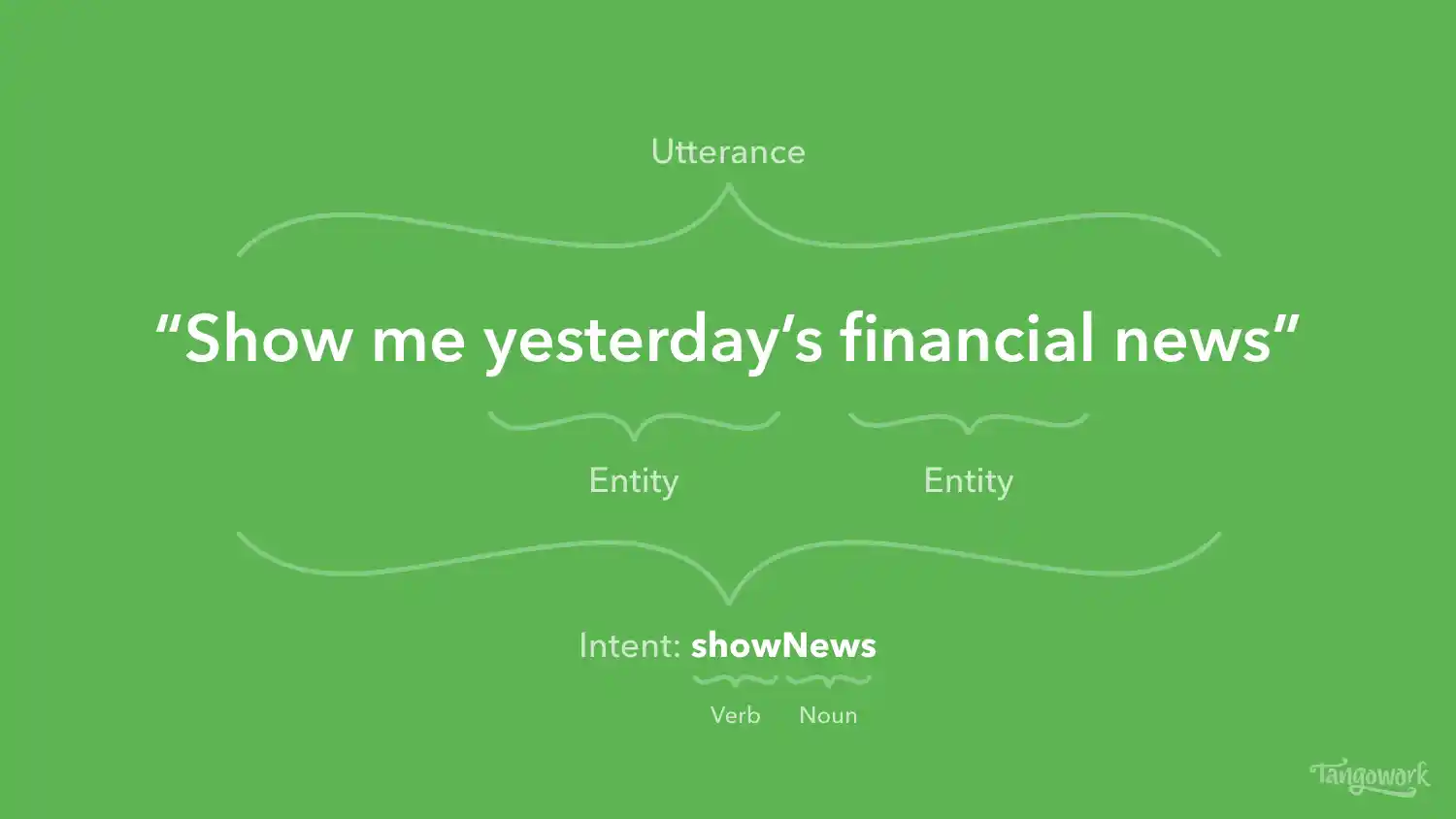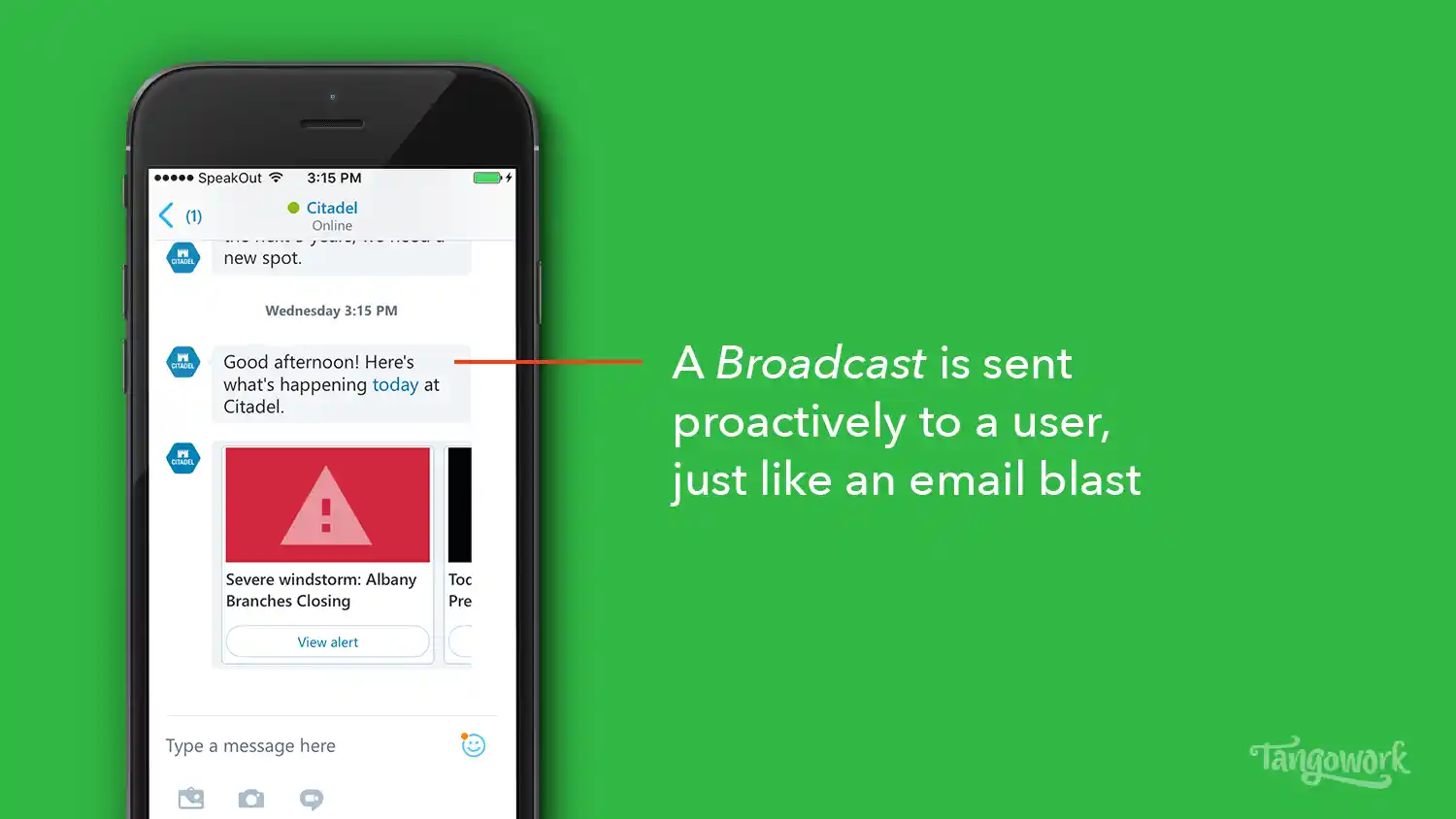Chatbot Vocabulary: 10 Chatbot Terms You Need to Know
by Chris McGrath | Jul 27, 2017
Like any technical field, chatbot development has its own vocabulary. A shared vocabulary makes it easier to communicate efficiently about chatbots. Here are 10 important terms you can add to your chatbot glossary.
Utterances, intents & entities: the 3 most important words in chatbots
Utterance: Anything the user says. For example, if a user types “show me yesterday’s financial news”, the entire sentence is the utterance.
Intent: An intent is the user’s intention. For example, if a user types “show me yesterday’s financial news”, the user’s intent is to retrieve a list of financial headlines. Intents are given a name, often a verb and a noun, such as “showNews”.
Entity: An entity modifies an intent. For example, if a user types “show me yesterday’s financial news”, the entities are “yesterday” and “financial”. Entities are given a name, such as “dateTime” and “newsType”. Entities are sometimes referred to as slots.

7 more useful chatbot terms
Broadcast: A broadcast is a message sent proactively to a user. It is not a response to user input. Also referred to as “subscription messaging”, a broadcast is the chatbot equivalent of a push message in a mobile app. Watch a video of Broadcasts in the Tangowork Chatbot Accelerator (1:01).
Channel: Channels are the medium for chatbot conversations. Examples of channels include Facebook Messenger, Skype, Slack and SMS. Email and web chat windows are also mediums. Video of channel examples in the Tangowork Chatbot Accelerator (0:42).
Conversational UI: User interfaces based on human speech, either written or spoken. Conversational UIs don’t use buttons, links or other graphical elements. Many chatbots, including the Tangowork Chatbot Accelerator, mix conversational UI with graphical UI. Compare these videos: conversational UI in the Tangowork Chatbot Accelerator, and a button UI in the Tangowork Chatbot Accelerator.

Natural Language Processing (NLP): NLP examines an utterance and extracts the intent and entities. NLP software includes Amazon Lex, Facebook’s Wit.ai, and Microsoft’s LUIS.
Pilot: The stage of development where the chatbot is deployed to a small group of users for testing. Pilots are especially critical for chatbots, because unlike a web application, the range of possible user input is unlimited.
Proof-of-concept (POC): The stage of development where the chatbot functions properly so long as the input is artificially constrained. A POC demonstrates the potential. POCs are especially useful for emerging technologies that are not fully understood by stakeholders, like chatbots.
Response: Anything the bot says in response to user input.
Chatbot Tips by Email
Subscribe for news about communications and chatbots, no more than once a month.